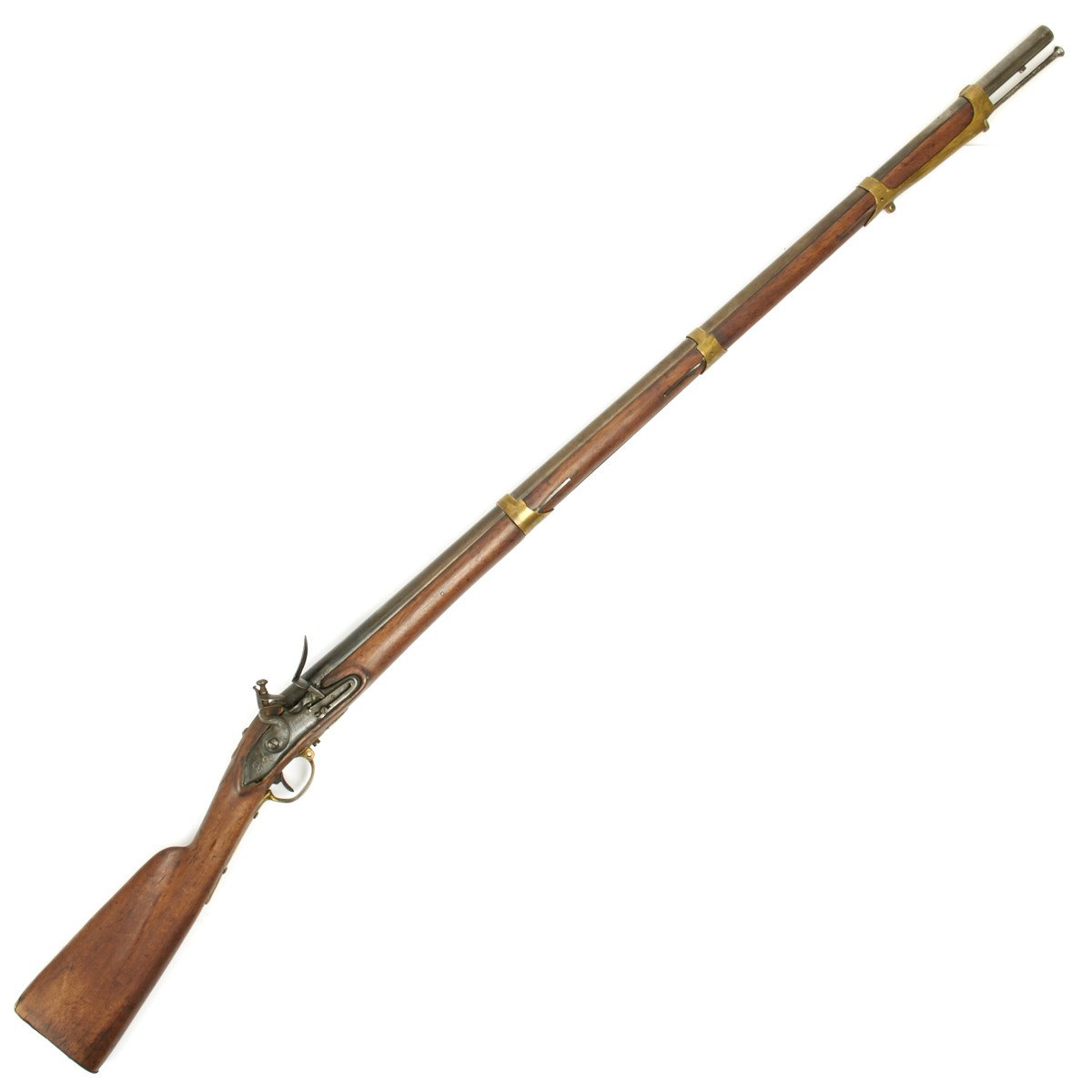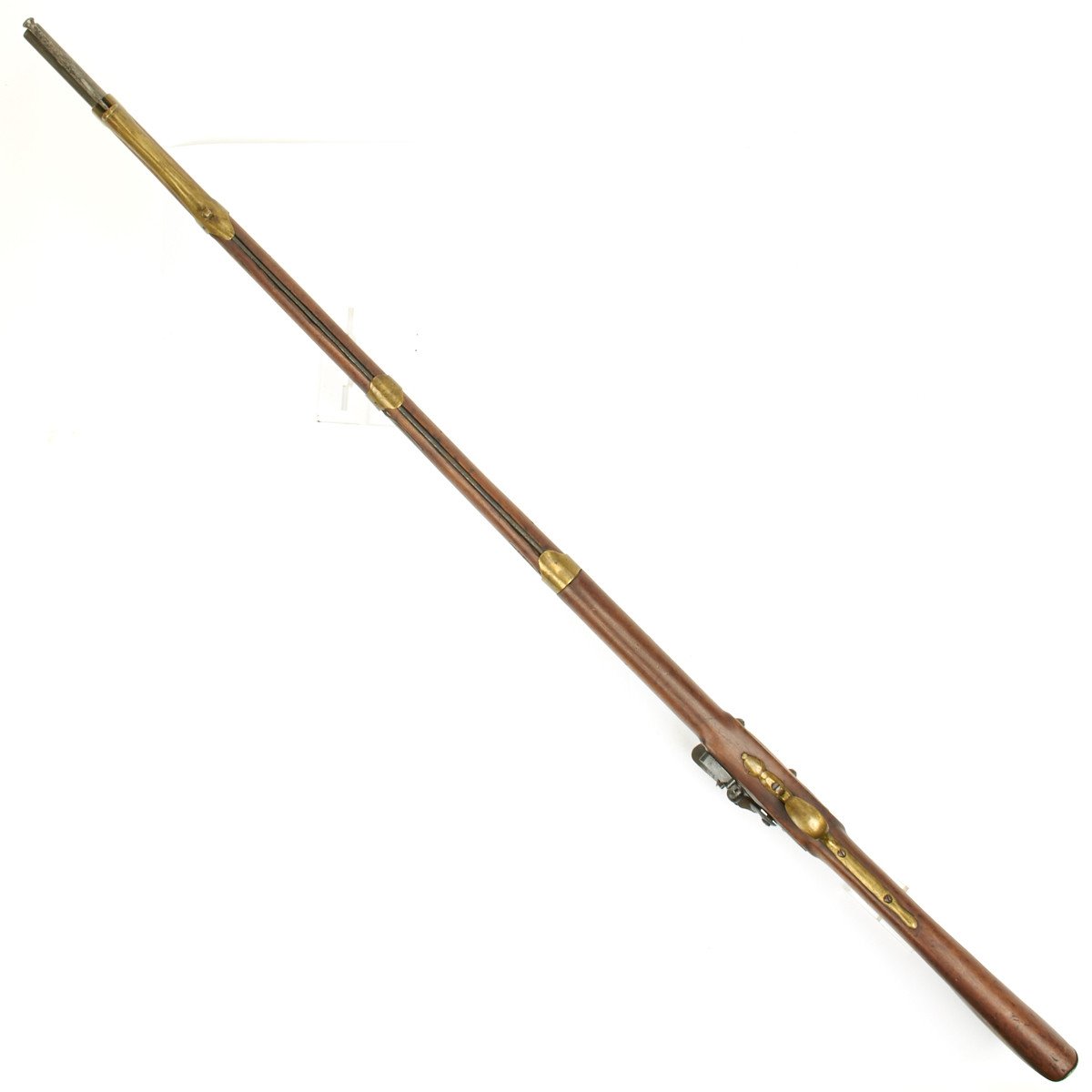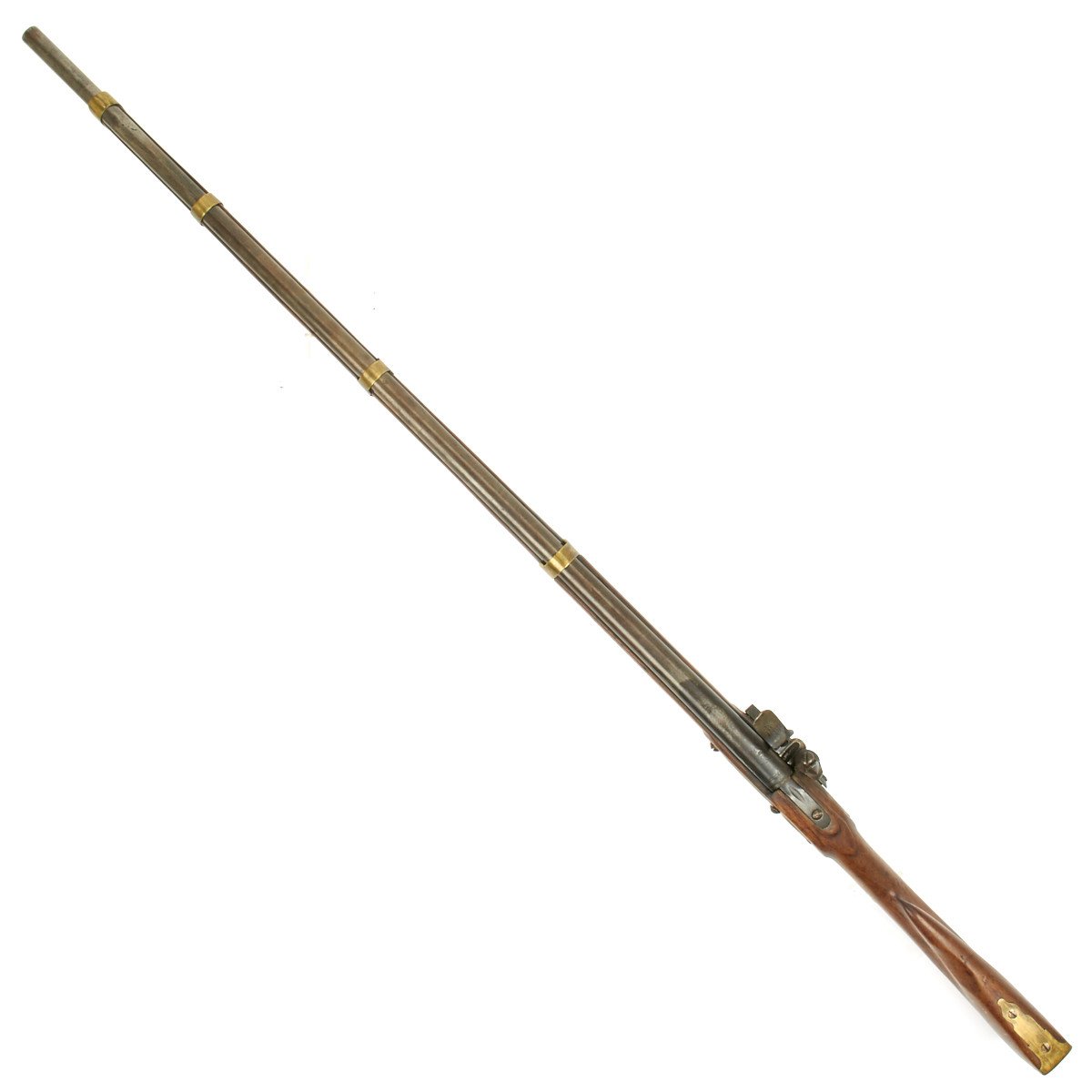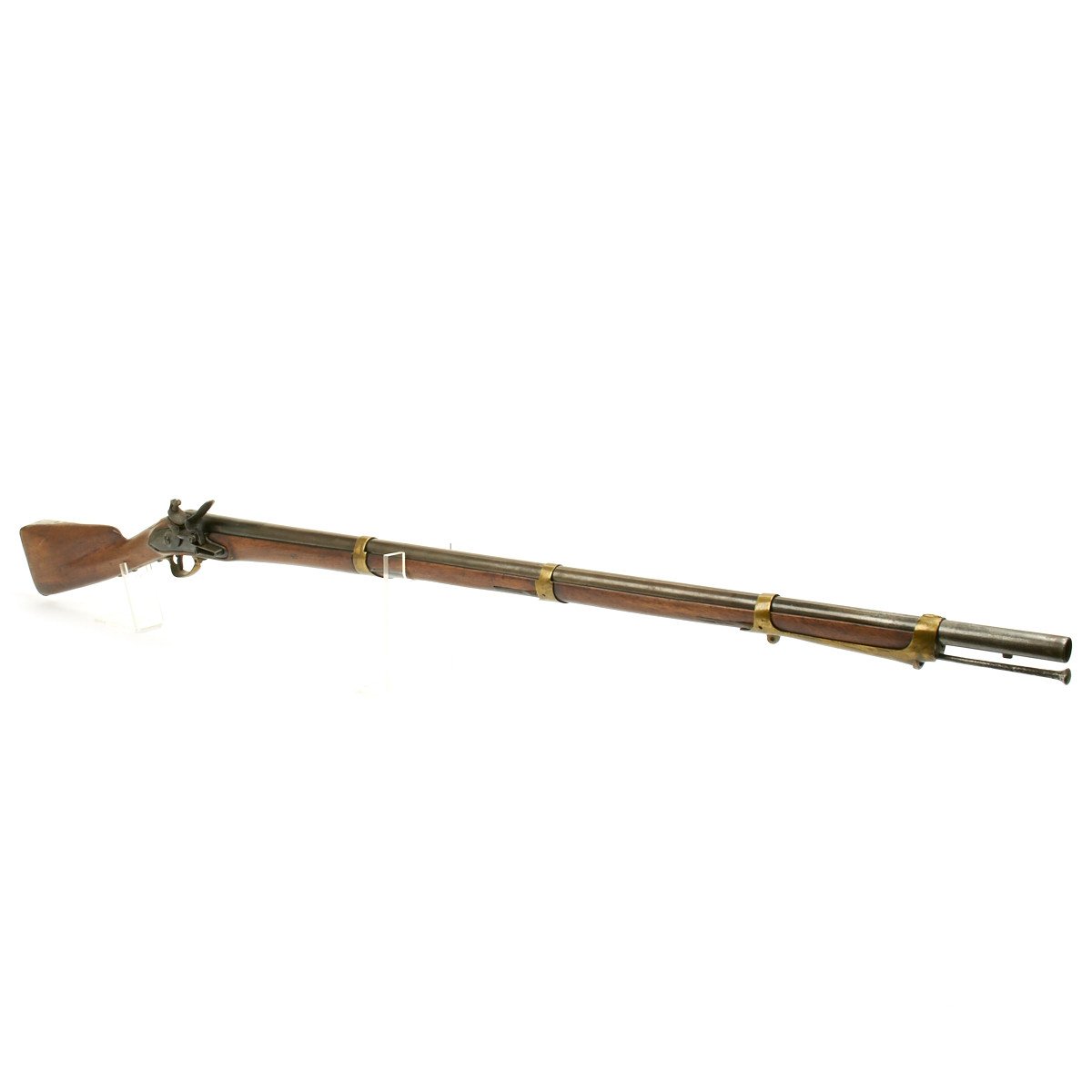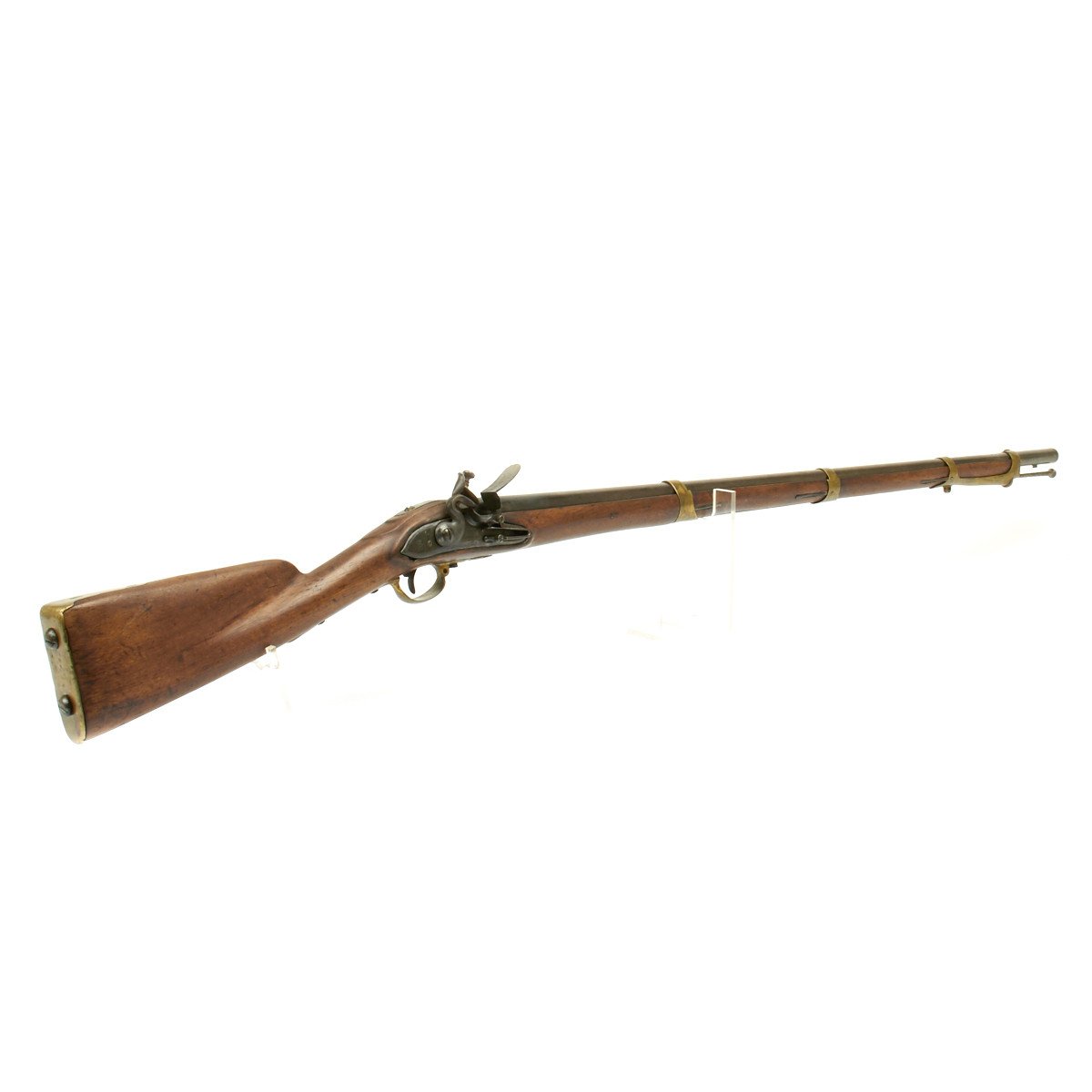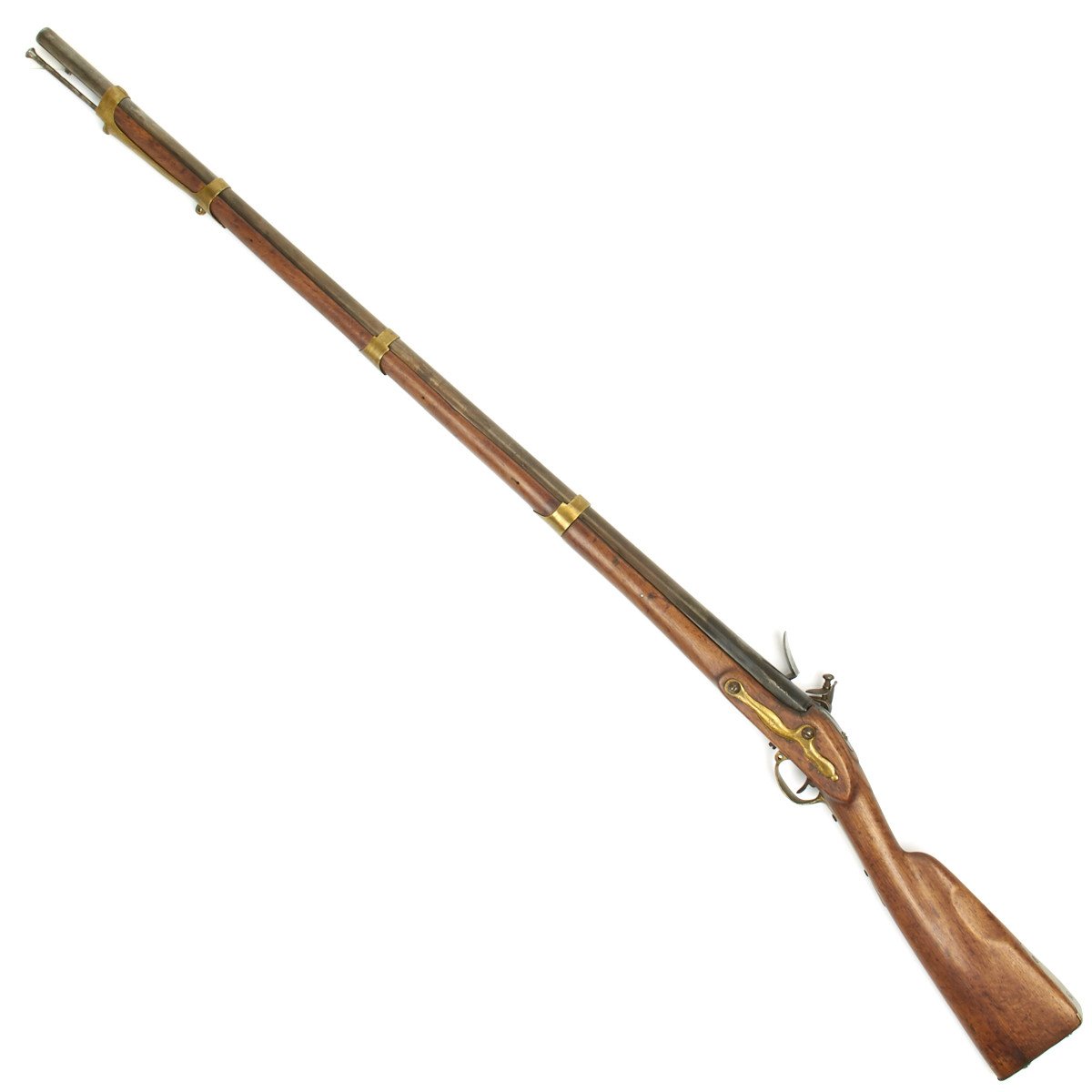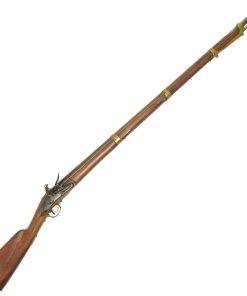Original American War of 1812 Dutch Musket with U.S. Surcharge Original Items
$ 2.995,00 $ 748,75
Original Item: Only One Available. While the British Brown Bess and French Charleville pattern muskets are the best known of the long arms used during the American Revolution and War of 1812, muskets of Dutch origin saw use by nearly ever faction of the belligerents on both sides as well.
Dutch gun makers centered in Amsterdam (as well as Rotterdam and Maastricht) established themselves among the premier arms makers in Europe in the mid-1600s, a position they would hold into the late 1700s / early 1800s, when the gun making centers in Birmingham and Liège finally eclipsed their output and international trading reputation. In fact, even the British relied on Dutch made muskets at various times in the 1600s & 1700s. They purchased muskets from the Dutch prior to the establishment of the 1730 Pattern Long Land muskets, and while some authors refer to Dutch muskets of that era as resembling the early Brown Bess muskets, the reality is that the 1730 Pattern muskets followed the Dutch lines of earlier purchases. The British also turned to Dutch makers during the early to mid-1700s, as well as The Seven Years War (French & Indian War), to help arm the fledgling American colonies. Dutch muskets with both South Carolina (as well as later US) surcharges are known. Thousands of Dutch muskets were imported for use by the American forces during the war, and they saw service with both state volunteer regiments and with the Continental Army. The Colony of Massachusetts directly purchased several thousand Dutch muskets during the revolution, with the help of Benjamin Franklin. According to author and researcher Harold Peterson, nearly every surviving Dutch musket in America can be traced to the Bay Colony. The Dutch also provided muskets to the Hessian mercenaries that fought during the American Revolution, showing that they were non-partisan businessmen, and were glad to make money selling to either side.
While Dutch muskets of the Revolutionary War and earlier periods in the Colonies take many forms, the classic variant that is most associated with Revolutionary use was a light weight flintlock musket of roughly Carbine Bore and of a style more often referred to as a Carbine or Fusil by the British. These guns tended to be between .65 and .69 caliber smoothbores, with barrels around 40 long, built on lightweight stocks with slender wrists and fine lines. The locks typically featured iron pans, and were flat on early muskets (pre-1750) and rounded on later ones (post-1750). The barrels were band fastened, rather than pinned, with the hardware tending to be brass and the upper barrel band tending to be a very long, double-strapped band. This pattern of musket originated in the 1750s and saw significant use during the Revolution. This is the pattern that was purchased by Massachusetts, and was also the same pattern captured in some numbers by the Continental Army after their successful capture of the Hessian defended outpost in Trenton, NJ on Christmas Night 1776.
This very nice Dutch made musket offered here is the classic example of a Revolutionary War era musket from the Low Country. However it dates from just after the war. Lambertus Michaelus Thone moved from Amsterdam to Liege and was made a citizen in 1781. He became a gunmaker shortly thereafter but did not start his manufactory, which employed 19 or 20 gunmakers in the fabrication of military muskets, until 1797. The manufactury ceased production in 1812. Courtesy of American Military Shoulder Arms, Volume I: Colonial and Revolutionary War Arms By George D. Moller.
The musket rates in very good condition. Rating the condition of 200 year old muskets is always problematic due to their age. So often the guns saw many years of service over the last 250 +/- years and often period repairs are interspersed with older (and sometimes more modern) restorations. Due restocking programs and the constant cannibalization of damaged muskets for replacement parts makes finding Revolutionary era military muskets that retain all of their original components practically unheard of.
The musket has a 42 long .69-caliber barrel retained by three brass bands and is just under 57 in length. The barrel is mostly smooth and shows only some scattered patches of minor peppering and pinpricking.
The rounded lockplate with iron pan is clearly marked forward of the hammer: THONE AMSTERDAM. The Thone family can be traced to Amsterdam in 1725 with descendant Lambertus Michaalis Thone working in the 1700s – 1780s being replaced by his son A. Thone taking over about 1800. The rear of the lock plate has a U.S. Surcharge confirming government (military) ownership.
The lock is complete, correct and in its original flint configuration. The lock is in good mechanical condition and works correctly. All portions of the flintlock battery function as they should and retain their correct and original geometry.
The musket has the typical Dutch style sheet brass buttplate with a thin, semi-decorative tang that is retained by two flat head screws. The gun retains both of its original sling swivels. The brass furniture has a medium mustard patina, having probably been cleaned long ago, and having finally toned to a very attractive hue.
The original rounded serpentine side plate is in place, retained by the two lock mounting screws and the original brass triggerguard. The stock is full-length and in about VERY GOOD+ condition for a Revolutionary War musket stock. The stock is full length and complete and shows the typical Dutch features of a slender wrist and deeply relieved comb. The butt is smaller and more slender than comparable military muskets of the era.
Overall this is a very attractive and nice condition example of a Dutch made War of 1812 musket. The gun is complete and correct. It has not been restocked, nor does it have the replacement parts that are so commonly encountered on muskets of this age. The gun is mechanically functional and has a fantastic, unaltered look to it overall. These guns saw service on both sides during the war, and the U.S. Surcharge makes it apparent that this military style musket was in fact issued to U.S. military organization. Original flintlock War of 1812 muskets are rarely found in such a pleasant state of preservation and this is one musket than any serious collector would be glad to add to their collection of Colonial era arms.
NOTE: International orders of antique firearms MUST be shipped using UPS WW Services (courier). USPS Priority Mail international will not accept these.
Fast Shipping with Professional Packaging
Thanks to our longstanding association with UPS FedEx DHL, and other major international carriers, we are able to provide a range of shipping options. Our warehouse staff is expertly trained and will wrap your products according to our exact and precise specifications. Prior to shipping, your goods will be thoroughly examined and securely secured. We ship to thousands clients each day across multiple countries. This shows how we're dedicated to be the largest retailer on the internet. Warehouses and distribution centres can be located throughout Europe as well as the USA.
Note: Orders with more than one item will be assigned a processing date depending on the item.
Before shipping before shipping, we'll conduct a thorough inspection of the items you have ordered. Today, the majority of orders will be delivered within 48 hours. The delivery time will be between 3-7 days.
Returns
The stock is dynamic and we cannot completely manage it because multiple stakeholders are involved, including our factory and warehouse. So the actual stock may alter at any time. It's possible that you may not receive your order once the order has been made.
Our policy is valid for a period of 30 days. If you don't receive the product within 30 days, we are not able to issue a refund or an exchange.
You can only return an item if it is unused and in the same state as the day you received it. You must have the item in its original packaging.
Related products
Uncategorized
Uncategorized
Uncategorized
Band of Brothers ORIGINAL GERMAN WWII Le. F.H. 18 10.5cm ARTILLERY PIECE Original Items
Uncategorized
Uncategorized
Uncategorized
Uncategorized
Uncategorized
Armoured Fighting Vehicles of the World: AFVs of World War One (Hardcover Book) New Made Items
Uncategorized
Uncategorized
Armored Burgonet Helmet & Polearm from Scottish Castle Leith Hall Circa 1700 Original Items
Uncategorized
Uncategorized
Uncategorized
Uncategorized
Uncategorized
Uncategorized
Uncategorized
Uncategorized
Australian WWII Owen MK1 Machine Carbine SMG Custom Fabricated Replica with Sling Original Items
Uncategorized
Uncategorized
